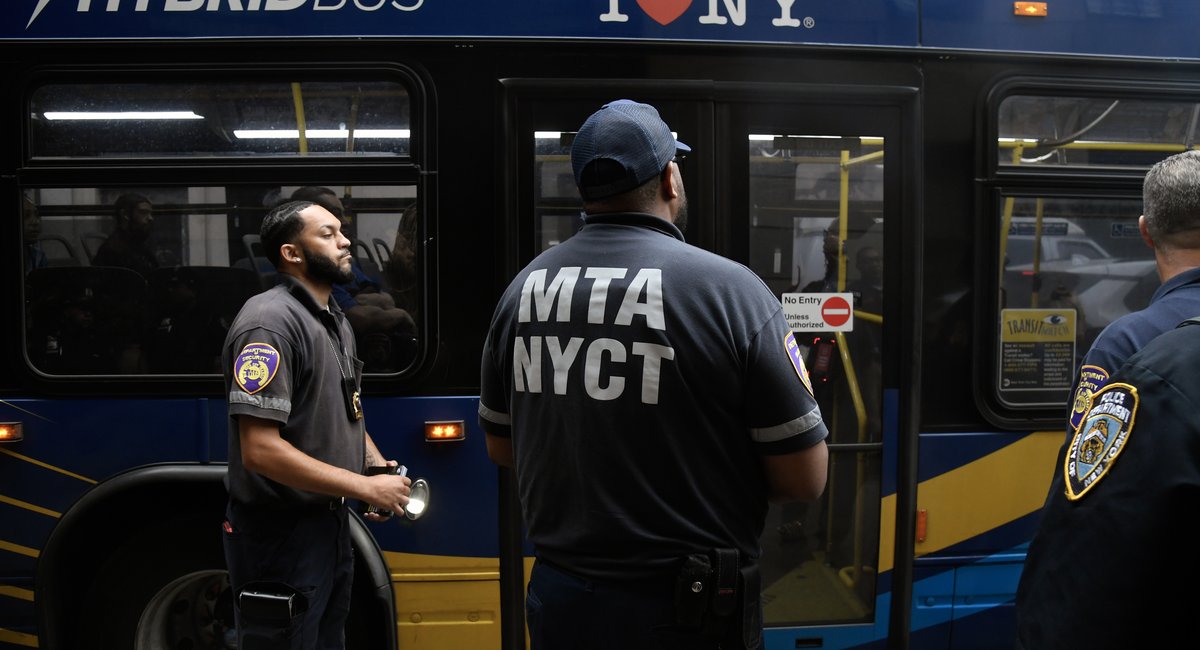MTA officials announced on Monday that the agency’s recent crackdown on bus fare evasion is yielding modest early results.
Interim NYC Transit President Demetrius Crichlow said paid ridership was 4.6% higher on routes where the agency deployed extra fare-enforcement agents, compared to the rest of the bus system. He said the increase covered the first two weeks of the MTA’s enforcement blitz that launched in late August, a month after the MTA reported that nearly half the city’s bus riders evaded the fare during the first half of 2024.
MTA Chair Janno Lieber said at a news conference last month that the agency is targeting 49 different bus routes to pursue their enforcement. Police officials in August said the enforcement would focus on “egregious” hot spots for fare evasion on buses.
According to Crichlow, the operation relies on MTA “EAGLE” team members — unarmed guards who enforce the fare — working with NYPD officers at 82 locations per week during rush hour.
EAGLE team members are instructed to to monitor buses’ back doors, where fare evasion is most common, to prevent riders from boarding without paying. The MTA has also begun to deploy plainclothes EAGLE agents to ride buses while taking note of who is evading the fare. If they notice someone trying to score a free ride, the agents are directed to escort them off the bus at “central locations” where NYPD officers are stationed, Crichlow said.
“That is targeting the problem with the culture of fare evasion, because when these large forces are there in uniform, generally [people] don’t try to avoid the fare,” he said at an MTA committee meeting on Monday.
New York Gov. Kathy Hochul in 2023 included money in the state’s budget to hire more than 100 new EAGLE staff for the following fiscal year. MTA spokesperson Meghan Keegan said the agency now employs more than 200 EAGLE team members and the agency is continuing to hire and train new ones.
Transit officials have for years said fare evasion is far worse on buses than on the subway. The MTA estimates it loses roughly $700 million per year to people who skip transit fares and vehicle tolls on bridges and tunnels.
Just last month, the MTA launched an ad campaign to discourage fare evasion. Focused on 202 subway stations near busy bus routes, the campaign features messages on digital signs, including: “A fare is required to ride, MTA fare inspectors and the NYPD are enforcing the fare payment.”
Crichlow and other MTA officials have routinely cited a five-month period during the height of the COVID-19 pandemic when bus service was free as a main reason why bus fare evasion has increased. According to agency estimates, the rate of bus fare evasion has almost doubled since 2021, rising in part due to that temporary fare suspension.
